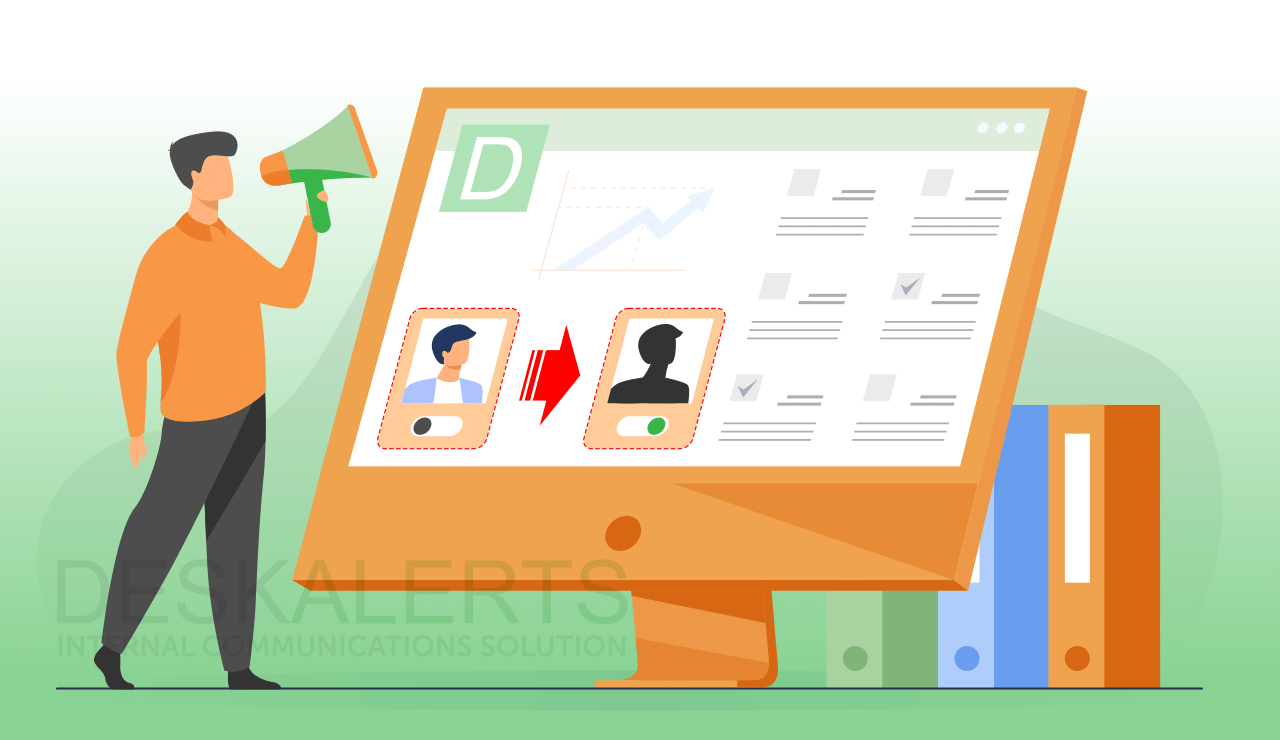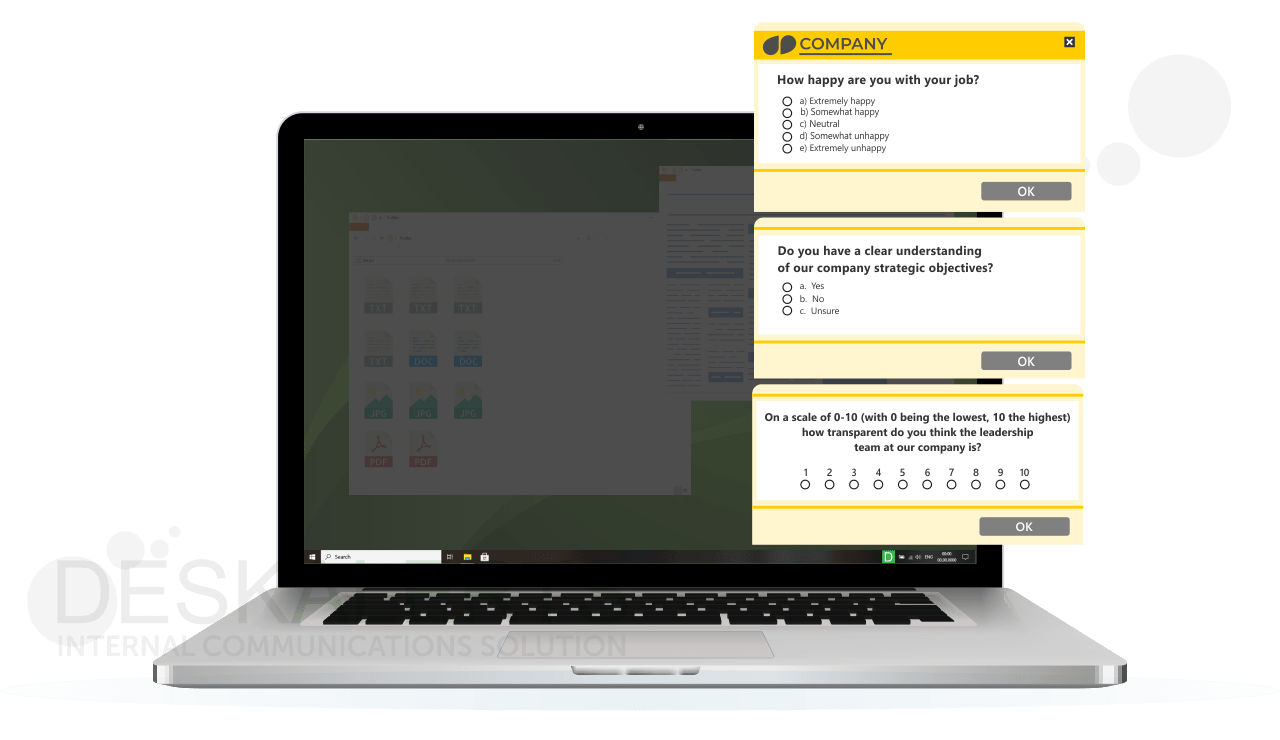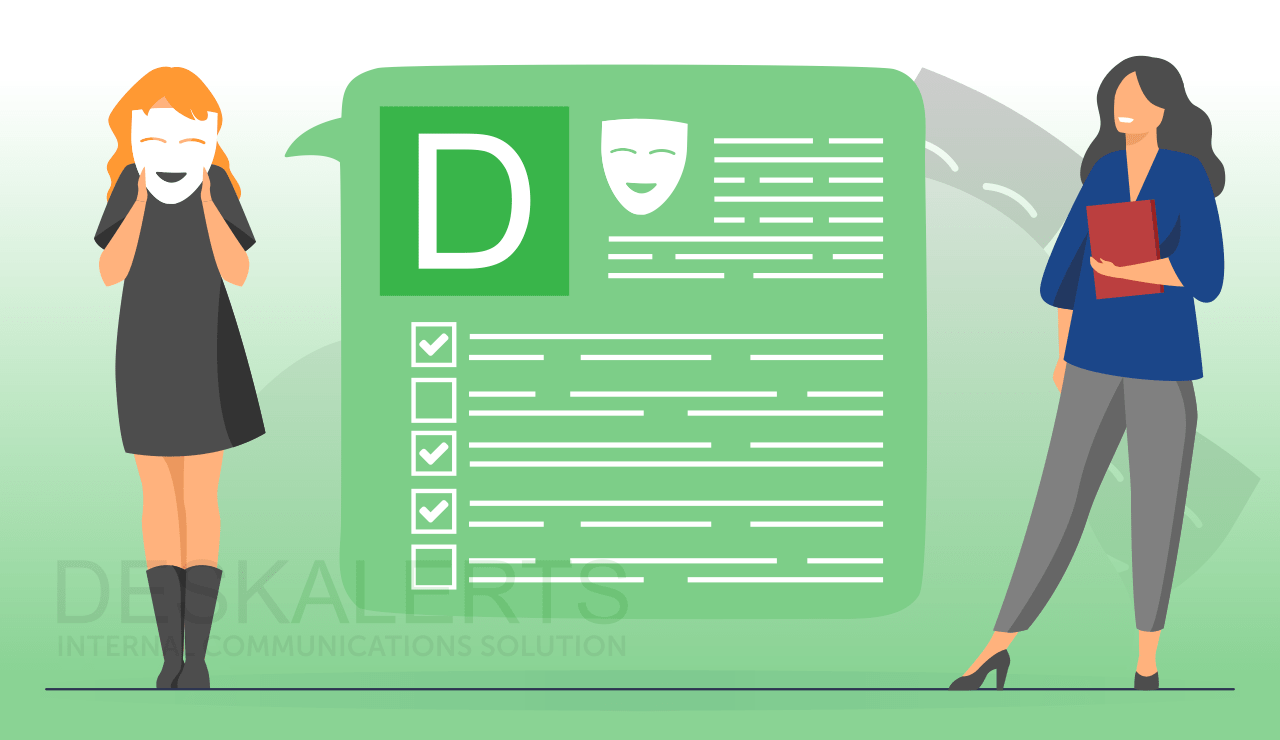
Employee surveys are an extremely useful tool to gather information and data from your workforce. You can use them to gain insights that you wouldn’t otherwise have about your organization from the people who are at the coal-face.
This information can be used to make organizational improvements, ensure safety, boost productivity and profits, and understand things like employee morale and engagement. If you use anonymous employee survey tools, you’ll get even more valuable information as people will be more inclined to give honest and candid feedback.
Table of contents
Why do you need an anonymous employee survey?
What is the difference between an anonymous survey and a confidential employee survey?
Pros and cons of anonymous employee surveys
How to collect anonymous feedback
Why do you need an anonymous employee survey?
To get meaningful and useful data from your employees, providing an anonymous work survey will increase the likelihood of gathering information that you can benefit from.
A survey from Cornell University found that 42% of people withhold information if they feel that they have something to lose or nothing to gain.
Additionally, a quarter of people said they would withhold the type of information that lets their company identify routine problems because they fear there will be consequences. If you can’t be guaranteed that the feedback you’re getting is honest and employees tell you what they think you want to hear, there’s little value in conducting the survey.
Other research from Arkansas State University backs this up.
Researchers have found that offering anonymity can increase the response rates to surveys: 75% of people say that they are more likely to participate if they can be guaranteed anonymity.
The greater the response rate, the better and more accurate the data you can collect.
It’s essential to have an accurate picture of what is happening within your company, particularly from the perspective of workplace culture. If there are problems affecting morale and engagement, you can’t put steps in place to fix them if you don’t know about them. And if you do nothing, you’ll potentially end up with consequences like absenteeism, presenteeism, reduced productivity, lower profits, and high staff turnover rates.
An anonymous survey assures the employee that it is safe for them to be honest, particularly if they have a genuine reason to believe that their views or feedback would lead to reprisals when reporting on the behaviors of managers or other colleagues.
When employees feel that they can freely share their opinions and feedback, this leads to higher employee retention rates and better overall performance. And you can survey your employees on practically anything. You might want to do a quick pulse COVID employee survey to find out if your workforce is healthy or if they have symptoms, or you might want to carry out a confidential employee survey measuring job satisfaction.
What is the difference between an anonymous survey and a confidential employee survey?

While the terms anonymous and confidentially are sometimes used interchangeably, they don’t mean the same thing… and this is particularly relevant to note if you want to send anonymous surveys at work.
When a survey is confidential, the data is held confidentially and can still be linked to an individual. This might be overt: they have responded with their name in the belief that the data is confidential. Or it may be covert: they believe that they are responding anonymously, but they are able to be identified when answering.
A truly anonymous survey for employees means that there is no way to identify, link to or otherwise store data regarding the survey to the person who has responded. The information is then aggregated and it is impossible to identify individual/specific participants.

Pros and cons of anonymous employee surveys
There are both positives and negatives when determining whether to use an anonymous survey method vs. a survey where the participants can be easily identified.
The pros include:
- Building trust with your employees and making them feel safe to speak up, which helps boost your engagement levels.
- Letting your employees know that their opinion is respected and valued.
- Ensures a higher response rate to the survey.
- Better quality data when people feel safe to give honest and unbiased feedback.
- Helps to create a culture of inclusivity and helps to level out power dynamics to create a more democratic workplace.
- Knowing someone’s identity isn’t always necessary to fix many workplace issues.
- Can give people the confidence to share ideas without fear of embarrassment, particularly if they express unpopular opinions in front of their peers.
- Can help to preserve relationships – people won’t necessarily know exactly where any criticism or complaints came from, particularly if it hurts their feelings.
On the other hand, there are some cons:
- When specific issues are raised in an anonymous survey for employees, you may not be able to follow up and take appropriate further action if you can’t identify who has complained.
- You can’t determine if negative feedback comes from a genuine place or someone known to be malicious and negative.
- The potential for multiple surveys to be completed by the same person, depending on the type of employee survey anonymous tools you use.
- By providing a forum to give anonymous responses, it implies that speaking truthfully is risky and can make people think you have a poor workplace culture.
- It can be easy to misinterpret or misunderstand the feedback that employees provide.
- It becomes a one-way conversation.
- Some types of feedback should be transparent.
- Results might be confusing and vague and open to interpretation.
- Provides a way for some leaders in the organization to shirk accountability if they can’t be identified.
- Some people wonder “are company surveys really anonymous?” and don’t trust the mechanism.

How to collect anonymous feedback
Anonymous surveys for employees might not be the right fit for every organization – in some circumstances. You may find that a confidential survey is a way to go. However, if you do determine that there is a strong case using this tool within your organization, it’s important that you set it up for success.
Even when you reassure your employees that your will ensure the employee survey is anonymous, sometimes this is met with scepticism.
As a communications professional, this is one of the biggest challenges I’ve encountered with driving participation to anonymous surveys for employees. Employees have told me that they are convinced management can still work out who has responded in a particular way to their anonymous employee survey questions and don’t feel that the surveys are truly anonymous.
While you might not be able to convince everyone that the survey is truly anonymous, there are steps you can take to allay any fears and boost the number of participants.
1. Review the questions that could potentially identify participants
Sometimes when you ask questions, participants will know that their answer is immediately going to identify them. For example, suppose you ask for gender and job title. In that case, it might make it easy to extrapolate who has responded in a particular way if, for example, you have one female software engineer and seven males doing the same job.
Carefully review all other questions to determine if people responding could potentially be identified by the information you’re asking for.
2. Reassure participants of de-identified results
Best practice dictates that if you ask questions that could potentially identify an individual, you won’t capture and report on it without a minimum number of respondents to certain demographic questions (for example, age, gender, location, workgroup).
3. Include warnings within the survey
When you have text box response fields where employees can elaborate and give examples, you should always include a warning to people not to include any information that could identify them in their response.
4. Communicate with employees about how the anonymity function works
If you have hesitant employees, like in the example I gave earlier, it’s important that you communicate with them clearly and in easy to understand language how the survey data is captured and what safeguards are in place to ensure that they cannot be identified from their answers.
This should form part of any messaging you do around the survey. Transparency is a two-way street: if you want your employees to trust you and give you the information you seek, they need to trust you and gather the information they need in return.
5. Ensure you’re using the right confidential employee survey tool
There are many tools on the market for delivering anonymous surveys at work, but they aren’t all the same. In fact, some software for surveys send custom links to employees that could potentially identify who the respondent is. Be sure that the tool you are using genuinely provides anonymity and be prepared to be able to explain precisely how it does that to any employees who need reassurance.
An employee survey tool like DeskAlerts will help you quickly, easily, and securely send anonymous employee surveys. This tool is one of the many features included in our internal communications software solution – the person creating a survey in the surveys, polls and quizzes module only needs to choose the anonymous survey function when sending it.
6. Show your employees the results – even if they’re not great
In the spirit of trust and honesty, it’s important that you show the survey results to your employees… even if it contains statistics that you aren’t happy about. In doing this, they will be able to see that it is difficult to identify individuals based on answers and that you are committed to improving the workplace based on the data that has been received.
7. Take appropriate follow up steps
Of course, just showing employees the survey results is only the beginning – you also need to take active steps to address any issues identified in the anonymous survey for employees. In doing this, you can show your employees that you value their anonymous feedback and take it seriously and can remind them of this as one of the benefits of anonymous surveys in the future when you need their participation once more.
***
An anonymous employee survey can help transform your business and improve your company culture if done well, using the right anonymous employee feedback tool. Do you have experience, good or bad, with anonymous surveys at work? Share your opinions in the comments below.
Frequently Asked Questions
Are anonymous surveys at work really anonymous?
Employees often perceive that the data that is collected via an anonymous survey will somehow be linked to them and appear on their records and may well wonder “are company surveys really anonymous?” Even if there is no link, it can sometimes be obvious who answered a particular question via a process of elimination. However anonymous surveys can be truly anonymous if you take the time to ensure that the anonymous employee survey questions you ask cannot in any way identify the employee.
How do I get anonymous employee feedback?
You can gather anonymous employee feedback by having a set of rules and guidelines in place that establishes and protects anonymity in your feedback processes. This includes:
- Establish the definition of anonymity in your workplace
- Determine anonymity thresholds
- Provide a mechanism for anonymous communication such as an anonymous employee feedback form
- Provide and maintain an environment where employees feel safe and empowered to provide honest feedback
- Ensure that you act on any feedback received.
How do I set up anonymous feedback?
To ensure that the data you are collecting from employees is anonymous, the following rules are good ones to follow when creating an anonymous employee feedback form:
- Use “anonymous” settings on the employee survey software you are using
- Ensure the questions you are asking can’t provide evidence of someone’s identity
- Avoid using custom data or custom variables when sending out your survey.
How do you get employees to give feedback?
People can be hesitant to provide feedback for fear of causing offence or harming their own careers. If you want to encourage your employees to provide you with honest feedback, you should make the following undertakings:
- Acknowledge that people may fear providing feedback
- Explain that you need honest feedback so that you can learn, grow and improve
- Ask for feedback regularly
- Ask for specific examples when employees provide feedback, whether it is good or bad
- Guarantee anonymity
- Act on any feedback received.
ARE ANONYMOUS HR SURVEYS REALLY ANONYMOUS?
The anonymity of HR surveys varies depending on an individual organization's practices and the technology that is used. In some cases, surveys are designed to be genuinely anonymous with responses collected without any identifying information. However, it's important to realize that complete anonymity can't always be guaranteed.
WHAT IS AN ANONYMOUS EMPLOYEE SURVEY?
An anonymous work survey is a tool used to gather feedback and insights from employees within a company while ensuring their identities are kept confidential. Participants can openly express their opinions, concerns, and suggestions without fear of reprisals or their personal information being disclosed. The anonymity encourages honest and candid responses.
CAN AN ANONYMOUS SURVEY BE TRACED?
In general, a truly anonymous survey for employees is designed so as to prevent individual responses being traced back to specific participants. However there can be exceptions or vulnerabilities including:
- Technical glitches or unintentional data leaks, it might be possible to trace responses.
- Someone with insider knowledge or access to survey data might attempt to identify participants.
- In small groups or when participants provide unique details in their responses, it
WHAT ARE THE CONS OF ANONYMOUS SURVEYS?
While anonymous surveys can offer valuable benefits they also have certain drawbacks:
- Anonymity can lead to participants providing vague or unexplained responses which creates challenges in effectively addressing specific issues.
- Individuals emboldened by anonymity may not take responsibility for their feedback, hindering constructive dialogue and follow-up.
- Anonymity can be abused by people who make inappropriate comments or give dishonest feedback, potentially harming morale or trust within the organization.
- Participants might skip questions or provide incomplete responses, reducing the quality and usefulness of the survey data.
- Anonymous surveys can be time-consuming and costly to administer and analyze.
 Caroline Duncan
Caroline Duncan










